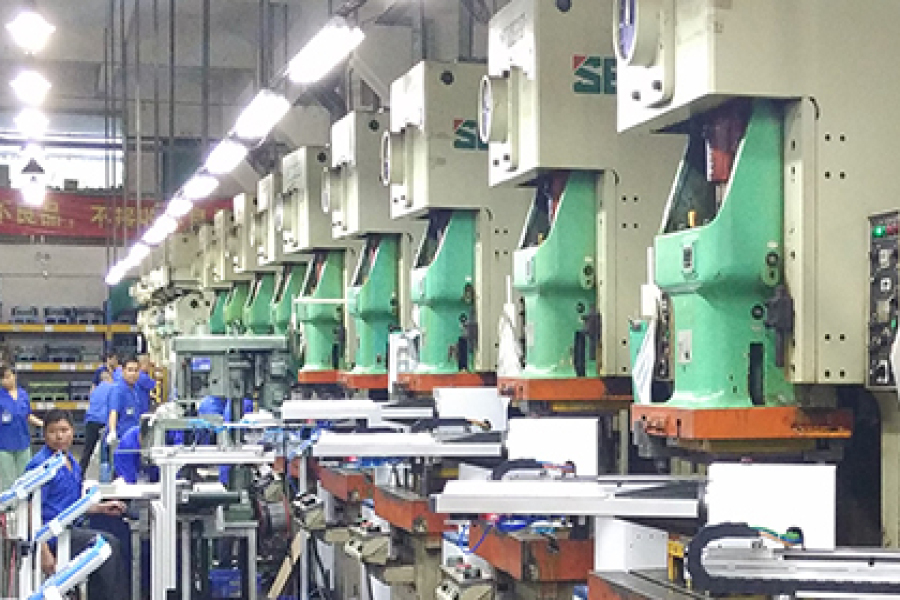Blow molding and injection molding are two popular manufacturing processes used in the production of plastic products. Both processes involve melting plastic and shaping it into a desired form. However, they differ in terms of the techniques and tools used, as well as the products they can produce.
We will delve deeper into the differences between blow molding and injection molding, and when each process is most appropriate for production.

What is Blow Molding?
Blow molding is a manufacturing technique used to produce hollow plastic parts. It is suitable for manufacturing large, hollow objects such as bottles, containers, and tanks. This process involves melting plastic granules and injecting them into a hollow mold to create the desired shape. The mold is then kept under pressure while the molten plastic is cooled, solidifying it into the desired product shape. Once the plastic has cooled, the mold is removed, and the final product is ejected.
There are three types of blow molding: extrusion, injection, and stretch blow molding. In extrusion blow molding, a continuous tube of molten plastic is extruded and inflated to form the desired shape. Injection blow molding combines extrusion and injection molding, where the plastic is first injected into a preform, then transferred to a blow molding machine to form the final product. Stretch blow molding involves stretching a preform by applying high-pressure air to produce bottles with higher strength and clarity.
What is Injection Molding?
Injection molding is also a manufacturing process used to produce plastic parts. It is a highly efficient and precise method of producing a large volume of complex plastic products. This process involves injecting molten plastic material at high pressure into a mold cavity, where it cools and solidifies, taking the shape of the cavity.
Injection molding is used to produce a wide range of products, including small components, toys, household appliances, and medical supplies. The versatility of this process is due to the variety of plastic materials that can be used, such as thermoplastics, thermosets, and elastomers.
The differences between blow molding and injection molding can be summarized in four main categories: application, process, products, and advantages/disadvantages.

Application
While both blow molding and injection molding are used in the production of plastic products, there are some key differences in their applications. Blow molding is mostly used for producing large, hollow objects such as bottles, containers, and tanks. It is not suitable for producing small and complex parts.
On the other hand, injection molding is suitable for producing a wide range of products, from small components to large parts. The process is commonly used for producing parts with high precision and complex geometries.
Process
Blow molding and injection molding differ significantly in terms of the process involved. As mentioned before, blow molding involves melting, shaping, and cooling plastic to produce hollow parts.
Injection molding, on the other hand, is a more complex process involving four stages: clamping, injection, cooling, and ejection. In the clamping stage, the two halves of the mold are brought together, and high pressure is applied to keep them shut.
In the injection stage, the molten plastic is injected into the mold cavity. The cooling stage involves allowing the plastic to solidify and cool before the final product is ejected from the mold.
Products
Because of the differences in the methods and processes used in blow molding and injection molding, the two processes produce different types of products. Blow molding is mostly used for producing hollow objects with thin walls, such as bottles and containers. This process is limited to producing only hollow parts; thus, it cannot be used for producing solid products.
Injection molding, on the other hand, is suitable for producing a wide range of products in different shapes and sizes, ranging from simple to complex geometries. It can produce both solid and hollow parts, making it a more versatile process.

Advantages and Disadvantages
Each process has its own advantages and disadvantages, depending on the product being produced and the production requirements. One of the main advantages of blow molding is its low cost, especially for high-volume production. It also allows for the production of large parts with relatively low energy consumption.
However, blow molding is limited in terms of the complexity of the products it can produce. It is also not suitable for producing small parts, making it less versatile compared to injection molding.
On the other hand, injection molding offers high precision and repeatability, making it suitable for producing complex and intricate parts. It is also faster and more efficient for producing large quantities of parts. However, the initial setup costs for injection molding can be high, making it less cost-effective for low-volume production.

Elite Mold is a plastic injection mold manufacturer specializing in injection molds and supplying plastic injection molding services for product design, prototype, Moldflow analysis, precise machining, and resourcing.Our main business is plastic injection molding. We now have sophisticated CNC machining center, engraving and drilling machine, lathe and milling machine, line cutting and other equipments. With these machines and experienced employees, we are able to make repeated positioning accuracy within tolerance 0.005mm, providing strong guarantee for precision parts.
We strive to exceed our customers’ expectation in all aspects of product manufacturing process, and recognize our great responsibilities to our customers, employees, suppliers and society. We keep adopting advanced production facilities to improve efficiency and ensure high and stable quality, and further reduce the production cost. The objective is to create reliable, viable and affordable molds, CNC machining parts and fast sample service for every industry.


